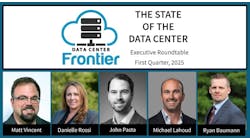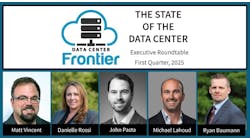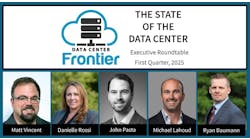The Data Center Frontier Executive Roundtable features insights from industry executives with lengthy experience in the data center industry. Here’s a look at the insights from Don MacNeil of EdgeConneX.
As Chief Revenue Officer, Don MacNeil is responsible for the alignment and execution of the EdgeConneX strategy and Go-To-Market execution. Don most recently served as GTT’s chief operating officer (COO) responsible for network operations, service delivery, assurance and vendor management teams, as well as GTT’s product organization. Don has a track record of delivering successful organizational change and operational improvement for national, international and global businesses. He served as COO and then as CEO at FiberLight, driving its business of designing, building and optimizing fiber-optic networks. He held several executive leadership roles, including COO, CMO and head of customer operations at XO Communications. MacNeil also previously served as Chief Technology Officer for EdgeConneX.
Don graduated from the United States Naval Academy, Annapolis, with a Bachelor of Science degree in naval architecture. He went on to serve 27 years in the U.S. Navy, both on active and reserve assignments, attaining the rank of captain. He holds an MBA from the College of William and Mary, Williamsburg, VA, and a Master of Science Physics from the Naval Postgraduate School, Monterey, CA.
Here’s the full text of Don MacNeil's insights from our Executive Roundtable:
Data Center Frontier: Recent earnings reports suggest the growth rate of cloud computing has moderated slightly. What’s your take on the progress of cloud computing – the “what inning are we in” question – and what lies ahead?
Don MacNeil, EdgeConneX: We are in the second inning of the first game of a double-header. While the recent news has focused on layoffs and capital cutbacks at some of the hyperscalers, many of the cutbacks were not focused on the cloud side of the business.
We are actually seeing the expansion of cloud infrastructure requirements, particularly internationally. Moreover, additional investments are being initiated to support the rapidly growing needs associated with AI and other emerging tech – which we haven’t even begun to see the impact of this new driver. As such, we are seeing growth in digital infrastructure requirements overall. The double header - Cloud and AI.
Data Center Frontier: How would you assess the state of the data center supply chain? What items continue to experience long lead times or availability problems?
Don MacNeil, EdgeConneX: Supply chain issues have certainly improved in 2023. Specifically, the supply chain has returned to a higher degree of predictability, but still has a way to go towards getting back to pre-covid intervals.
Data center providers and infrastructure vendors are better aligned on timelines so that expectations can properly be established on delivery dates. Confidence in those dates alleviates the biggest challenge for providers regarding planning and customer commitments. At the same time, some of the extended delivery dates experienced during Covid have been corrected and reduced.
Data Center Frontier: Data centers have always been highly-automated facilities. What are the most promising opportunities in automation and data center management? Can AI, augmented reality, and robots play a meaningful role?
Don MacNeil, EdgeConneX: EdgeConneX was founded with its data centers being automated from inception. Our initial Edge facilities were built “lights out” and unmanned, with our proprietary DCIM platform, EdgeOS, built to manage our facilities remotely. This innovation was highly economical and efficient but also proved invaluable during Covid when many customers couldn’t travel to the site(s) where their infrastructure was deployed. We ensured business continuity for our customers during the pandemic and allowed them to remotely manage and operate their infrastructure with the peace of mind of 5 9’s reliability.
We look to continue to automate our facilities as we scale up in size and geographically worldwide. In addition, we are actively trialing numerous technologies to ensure our sites are secure, reliable, and sustainable. Additionally, we are working to provide our customers with more transparency into the sources of grid power – focusing on those sources that are green (solar and wind). By understanding the local environment and weather, we can assist our customers in managing workloads. On a day with no wind or low wind, we could push high power consuming workloads to another day when the wind returns, and the power is therefore “greener”.
Data Center Frontier: The industry has stepped up its efforts to attract and retain talent, but staffing remains a huge challenge. What’s working well, and what more can be done to build a diverse workforce of the future.
Don MacNeil, EdgeConneX: Finding and retaining talent is a significant issue for all data center operators. Staffing challenges can also be extended to the supporting industries on the build side, like electricians, construction workers, HVAC crews, and engineering. In addition, we are always trying to find a younger and more diverse infusion of talent into the industry.
Collaboration with partners like Salute Mission Critical that retrain and reskill former military personnel into the data center industry is one example of bringing in new talent into the industry. Similarly, the work the Infrastructure Masons (iMasons) and other organizations are doing to attract young and diverse talent through initiatives such as the Capstone program is another excellent example. However, much more must be done as the digital infrastructure business rapidly scales, particularly internationally. The scarcest resource will be talent if we don’t continue to invest in the people that build and operate data centers.







